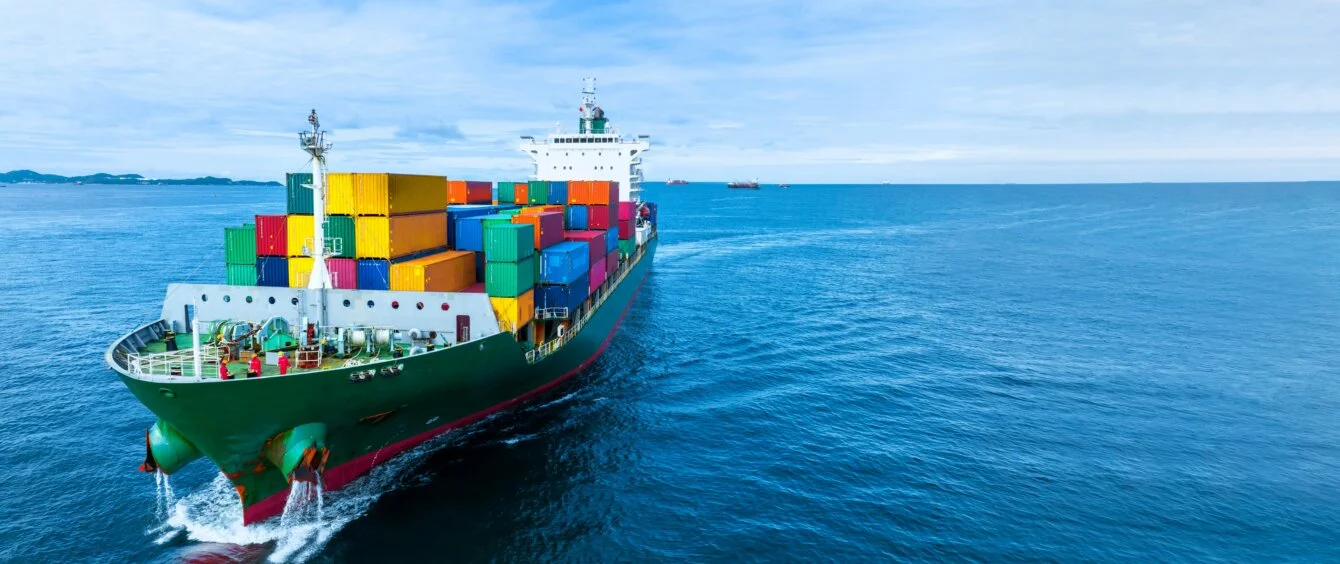Ships transport over 80 percent of the world’s goods, making them indispensable to global trade. But most freighters run on heavy oil, which produces copious amounts of greenhouse gases. So far, these emissions have hardly been regulated. Unlike German roads, international waters do not feature environmental zones. This is something the United Nations’ International Maritime Organization (IMO) would like to change. Its 175 member states reached an accord in July 2023 to reduce ocean shipping emissions to net zero by 2050.
The IMO is a specialised agency of the United Nations. It is responsible for the safety and security of shipping. Also in its remit are reducing sea and air pollution from shipping. In addition to its 175 member states, the IMO consists of 66 intergovernmental organisations with observer status, and 88 non-governmental organisations with consultative status.
The 2023 IMO Strategy on Reduction of GHG Emissions from Ships (2023 IMO GHG Strategy) is the result of years-long efforts by the IMO to get the sector on course for the Paris climate goals and the United Nations’ sustainable development objectives. According to the organisation, shipping recently accounted for less than three percent of global carbon dioxide emissions, but – unlike other areas – has lacked a clear decarbonisation path so far.
The 2023 IMO GHG Strategy finally creates a framework for this. Consultations in London culminated in the members agreeing on four main goals:
- Use of more energy efficient vessels with lower CO2 emissions in ocean shipping
- Reduction of emissions by at least 40 percent by 2030 compared to 2008
- Increase in the share of technologies and fuels with zero or very low emissions to at least five, if not ten percent
- Shipping should achieve net zero by 2050 or soon thereafter
The IMO has set up a committee tasked with coming up with a package of measures by 2025 to accomplish this. One element will be a carbon intensity standard for ship fuels. This would create a basis for phasing out fuels with particularly high emissions. Furthermore, the IMO plans to introduce a price mechanism for greenhouse gas emissions, similar to das EU Emissions Trading System. These and additional medium-term measures are to enter into force by 2027.
Power-to-X fuels, also known as e-fuels, could make an important contribution to decarbonising transportation. These fuels are produced using electricity. Hydrogen and ammonia are considered very promising alternatives for shipping. If they are produced using electricity from renewables, they are carbon neutral. E-fuels possess advantages over battery-powered drives especially in aviation and shipping. This is because batteries have a poor weight-to-range ratio.
The organisation intends to review its strategy and adjust it if necessary once every five years. Moreover, the members want to discuss potential long-term measures as part of the first review in 2028.
The adoption of the 2023 IMO GHG Strategy is a monumental development and opens a new chapter towards maritime decarbonization. At the same time, it is not the end goal, it is in many ways a starting point for the work that needs to intensify even more over the years and decades ahead of us. Kitack Lim, IMO Secretary-General
In the accord, the IMO underscores that the goals relating to developing countries are very ambitious. In reaching them, due regard must be paid to their effects, above all on the least developed countries and small island nations. To this end, the organisation seeks to evaluate various criteria such as dependency on shipping relating to the supply of food to the population. The objective is to ensure that no country is left behind in the climate protection efforts.
